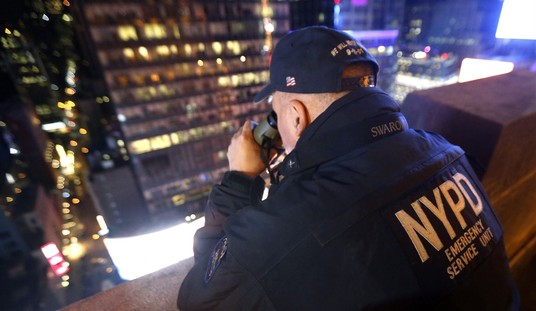For the Academy of Motion Pictures Arts and Sciences, which has nominated it for an Oscar as Best Foreign Language Film, the animated feature Waltz with Bashir is an “Israeli” film. As discussed in part one of this article, the film paints a grim portrait of Israeli forces during the 1982 Lebanon War and even accuses them of complicity in “genocide,” drawing unseemly parallels between Israel and Nazi Germany. To this extent, the “Israeli” label is undoubtedly crucial to the effect that the film has on its audience. If Israelis say so themselves, after all, it must be true. …
But is Waltz with Bashir an Israeli film? Well, director Ari Folman is Israeli. Folman is also the star of the film and his ostensible “reconstruction” of his personal experience in Lebanon provides the storyline. But closer inspection of the film’s financing reveals that Waltz for Bashir was in fact largely produced with European money — and not just European money, moreover, but European public money.
As Folman acknowledges in an interview with the publication France-Amérique, the film’s “most important source of financing” and “principal sponsor” was the Franco-German “cultural” channel ARTE. ARTE is a public television channel that is jointly funded by the French and German governments. In addition to broadcasting in the two sponsor countries, ARTE also provides programming to other European television channels and co-produces films. A French subdivision of ARTE, ARTE France Cinéma, co-produced Waltz with Bashir.
It is hardly surprising that ARTE would have been receptive to Folman’s project. ARTE, both in its television programming and its film productions, has been beating the drum about the Middle East conflict for years now and its basic “orientation” in the matter has never been hard to find. For example, ARTE also co-produced Hany Abu-Assad’s 2005 ode to a Palestinian suicide bomber Paradise Now. The film depicts the bomber as a kind of Christ-like figure: a shot of the bomber dining with friends the night before the attack is clearly modeled on Da Vinci’s “The Last Supper of Christ.”
Nor are Israeli/Nazi comparisons anything new to ARTE. In 2003, ARTE broadcast a four and a half hour documentary titled Route 181 on the 1947 UN partition line between Israel and a prospective Arab state. The film employed visual and thematic allusions to Claude Lanzmann’s classic documentary Shoah, in order to suggest a parallel between the displacement suffered by Palestinian Arabs as a result of the creation of Israel and the fate suffered by European Jews under the Third Reich. The film juxtaposes an interview with a Palestinian Arab barber about the “Naqba,” or “disaster,” and a shot of train tracks. One of the most memorable moments in Lanzmann’s Shoah occurs during an interview with the barber Abraham Bomba: a Holocaust survivor who begins to cry as he talks. Shoah famously features images of train tracks. Those train tracks led to Auschwitz. Route 181 was co-produced by ARTE France Cinéma and WDR, one of the public television broadcasters making up the German pole of ARTE.
In 2004, ARTE broadcast a four and a half hour drama on the “Nabqa” titled The Gate of the Sun (La Porte du Soleil). Yet again, the film is replete with Israeli/Nazi allusions, including a kibbutz transformed into a kind of concentration camp for Palestinian women and a Palestinian man with a number tattooed on his arm. (For a contemporary response by the French political commentator Armand Laferrère, see here.) The Gate of the Sun was not only co-produced by ARTE, but indeed, as Egyptian director Yousry Nasrallah recounts, it was actually commissioned by ARTE. The film, moreover, also received direct subsidies from both the French Foreign Ministry and the European Commission.
In addition to the funding from ARTE, the production of Waltz with Bashir was supported by a direct grant of some €150,000 from the German state of Berlin-Brandenburg. (See the grant listing here.) Berlin-Brandenburg provided another €50,000 to support the film’s distribution (see the grant listing here) and yet another €10,000 to support its showing at Cannes (here).
American moviegoers would likely be surprised to learn just how many of the current offerings in their cinemas were made with German public funds. The Tom Cruise would-be “thriller” Valkyrie received €5 million from the German federal government. And the Kate Winslet “erotic” Holocaust drama, The Reader, likewise received millions of euros from the German states of Berlin-Brandenburg and North Rhine-Westphalia.
The German company Razor Film is one of the three (German, French, and Israeli) production companies involved in the making of Waltz with Bashir. (Razor Film likewise co-produced Paradise Now, which also received ample German subsidies.) German companies were also responsible for post-production work on both image and sound. The German distributor, The Match Factory, handles international sales of the film. Given this pervasive German involvement and the generous German financial support, Germany’s publicly-funded film promotional agency was surely correct to include Waltz with Bashir in its list of “German Films” at the 2008 Cannes film festival.
The German interest in Waltz with Bashir is not hard to understand and it is both political and, perhaps above all, psychological in nature. By accusing Jews of complicity in “Nazi-like” crimes, Folman’s film releases Germans and Germany from the heavy burden of their own past. If Jews can behave like Nazis, then anyone can. The fact that Folman is himself Israeli and Jewish is, of course, essential to the act of absolution that his film performs.
The European Union has also provided support for Waltz with Bashir by subsidizing its distribution via the EU’s Euromed Audiovisual program. It should be noted that Waltz for Bashir did receive some, presumably token, backing from two Israeli sources: the Israel Film Fund and the New Foundation for Cinema and Television. Although its name might lead one to believe that it is a public institution, the Israel Film Fund is in fact an NGO. Its director, Katriel Schory, forms part of the “Reflection Group” of the EU’s Euromed Audiovisual program. One of his colleagues on that body is, incidentally, Michel Khleifi, the co-director of Route 181. The New Foundation for Cinema and Television is itself a major recipient of EU funding. It recently received a reported €1.5 million grant from the Euromed Audiovisual program.









Join the conversation as a VIP Member